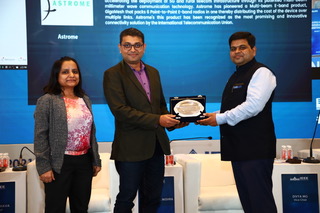sorcerer
New Member
- Joined
- Apr 13, 2013
- Messages
- 26,919
- Likes
- 98,474
India first Asian country to join International Pulsar Timing Array with uGMRT
India has formally joined the elite league of international radio telescopes that are involved in tracking very low-frequency gravitational waves, especially those emerging from two orbiting very large supermassive blackholes.
Observations made by Pune-based upgraded Giant Metrewave Radio Telescope (uGMRT), operated by TIFR – National Centre for Radio Astrophysics (NCRA), will be used along with the data gathered by some large radio telescopes located in Europe, America and Australia.
 The uGMRT is one of the world’s largest and highly sensitive instruments offering a frequency range between 300 to 800 MHz. (National Centre for Radio Astrophysics)
The uGMRT is one of the world’s largest and highly sensitive instruments offering a frequency range between 300 to 800 MHz. (National Centre for Radio Astrophysics)
Last week, the International Pulsar Timing Array (IPTA) approved India’s full membership as the Indian Pulsar Timing Array (InPTA).
With uGMRT, India has become the first Asian country to be a full member of IPTA consortium comprising European Pulsar Timing Array (EPTA), North American Nanohertz Observatory for Gravitational Waves (NANOGrav) and Parkes Pulsar Timing Array (PPTA) from Australia.

 indianexpress.com
indianexpress.com
India has formally joined the elite league of international radio telescopes that are involved in tracking very low-frequency gravitational waves, especially those emerging from two orbiting very large supermassive blackholes.
Observations made by Pune-based upgraded Giant Metrewave Radio Telescope (uGMRT), operated by TIFR – National Centre for Radio Astrophysics (NCRA), will be used along with the data gathered by some large radio telescopes located in Europe, America and Australia.

Last week, the International Pulsar Timing Array (IPTA) approved India’s full membership as the Indian Pulsar Timing Array (InPTA).
With uGMRT, India has become the first Asian country to be a full member of IPTA consortium comprising European Pulsar Timing Array (EPTA), North American Nanohertz Observatory for Gravitational Waves (NANOGrav) and Parkes Pulsar Timing Array (PPTA) from Australia.

India first Asian country to join International Pulsar Timing Array with uGMRT
Observations made by Pune-based upgraded Giant Metrewave Radio Telescope (uGMRT) will be used along with the data gathered by some large radio telescopes located in Europe, America and Australia.



